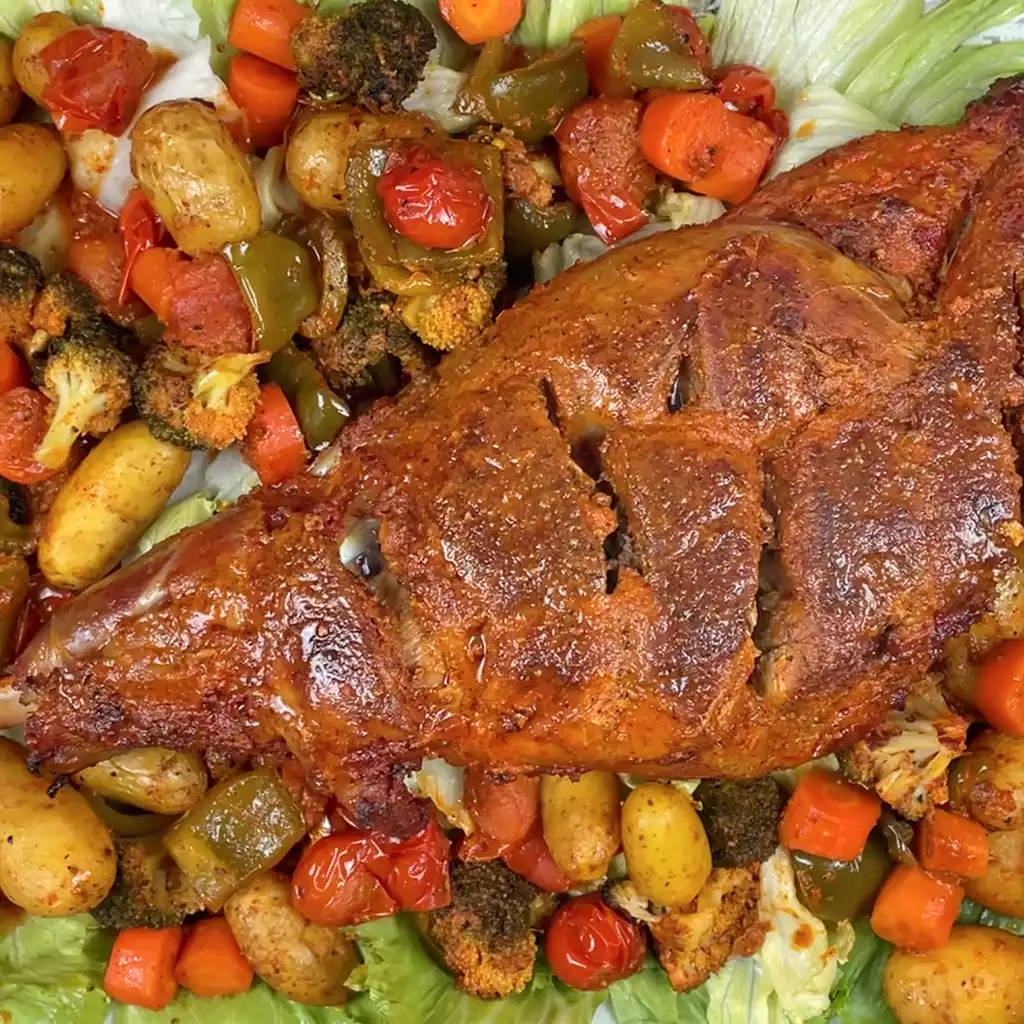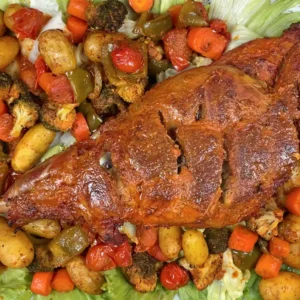
Tandoori leg of lamb is a dish that packs a punch of flavors and aromas, originating from the vibrant culinary landscape of India.
It’s a dish that combines tender lamb with a bold marinade, resulting in a mouthwatering experience that’s sure to impress your taste buds.
While the name might sound intimidating, fear not, as I’m here to guide you through the process step by step.
Expert Tip: For a smoky flavor reminiscent of a traditional tandoor, add a few wood chips to your oven while roasting the lamb.
Lamb leg: The lamb leg provides succulent meat that absorbs the flavors of the marinade beautifully.
Yoghurt: Adds creaminess to the marinade while also tenderizing the meat.
Olive Oil: Enhances the richness of the marinade and helps in achieving a juicy texture.
Garlic Paste and Ginger Paste: Infuses the lamb with aromatic flavors that are quintessential to Indian cuisine.
Spices: A blend of Kashmiri chilli, chilli powder, salt, paprika, cumin powder, coriander powder, black pepper, turmeric powder (haldi), and lemon juice creates a complex and vibrant marinade, elevating the taste of the dish to new heights.
Vegetables: Potatoes, cherry tomatoes, broccoli, bell pepper, and carrots add color, texture, and nutritional value to the dish, complementing the bold flavors of the tandoori lamb.
Extras: Additional olive oil, salt, and black pepper are used to season the vegetables, enhancing their natural flavors during roasting.
Expert Tip: For added depth of flavor, toast whole spices such as cumin and coriander seeds before grinding them for the marinade.
Expert Tip: Allow the lamb to rest at room temperature for 30 minutes before roasting to ensure even cooking and juiciness.
Yes, marinating the lamb overnight allows the flavors to penetrate deeper, resulting in a more intense and flavorful dish.
While the marinade works wonderfully with lamb, you can experiment with other proteins such as chicken or paneer for a delicious variation.
The lamb is cooked through when it reaches an internal temperature of 145°F (63°C) for medium-rare or 160°F (71°C) for medium. Use a meat thermometer to ensure accurate cooking.
Yes, you can freeze the marinated lamb for up to three months. Thaw it in the refrigerator overnight before cooking.
Absolutely! Feel free to adjust the amount of chili powder and Kashmiri chili according to your spice preference. You can also add a dollop of yogurt to mellow out the heat.
Here are some more recipes for you to enjoy! If you my recipes don’t forget to rate and leave a comment.
If you have any recipe suggestions, please do not hesitate to ask me. A great way to stay in contact with me is through Instagram, Facebook, Twitter and YouTube. Don’t forget to tag me @CookwithNabeela in your recipe photos!

Subscribe now to receive my latest recipes directly in your inbox. Stay up-to-date and never miss out!

I love to cook! I want to share with you my favourite, delicious family-friendly recipes. I want to inspire you to create fantastic food for your family every day.
Latest comments (7)
What was the weight of your lamb leg please?
Is the electric oven setting for a fan assisted oven?
Yes, the temperature is for a fan-assisted oven — if you’re using a conventional one, just increase it by about 10–20°C. Hope that helps! 😊
What does “gas mark 4 for two hours” mean? My oven is electric.
Gas mark 4″ is a temperature setting used in gas ovens. For electric ovens, it’s about 180°C (350°F). So, just set your electric oven to 180°C and cook your recipe for two hours! 😊 Let me know if you need any more help!
Should tbsp read tsp? A tablespoon of turmeric and salt seems like a lot…
Thanks for the feedback! Yes, you can definitely reduce it to 1 tsp if you prefer a milder flavour. The tablespoon measurement is just for those who love a stronger taste, but feel free to adjust to suit your taste! 😊